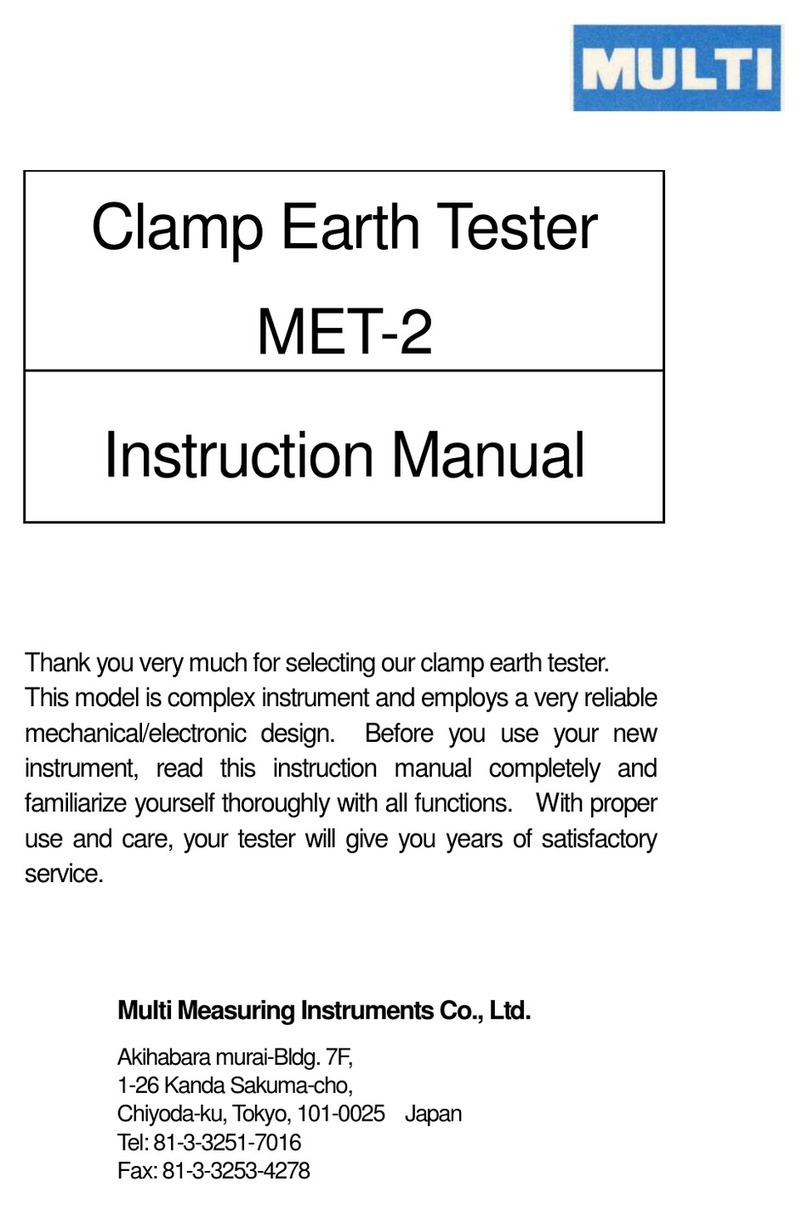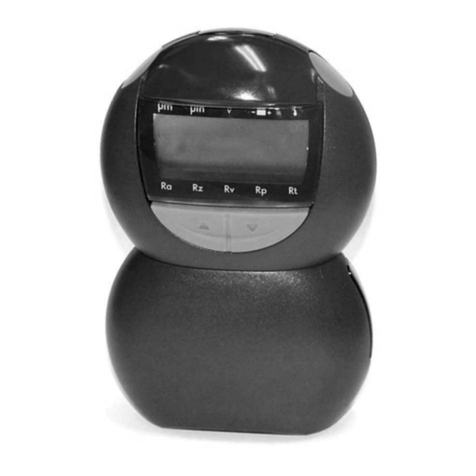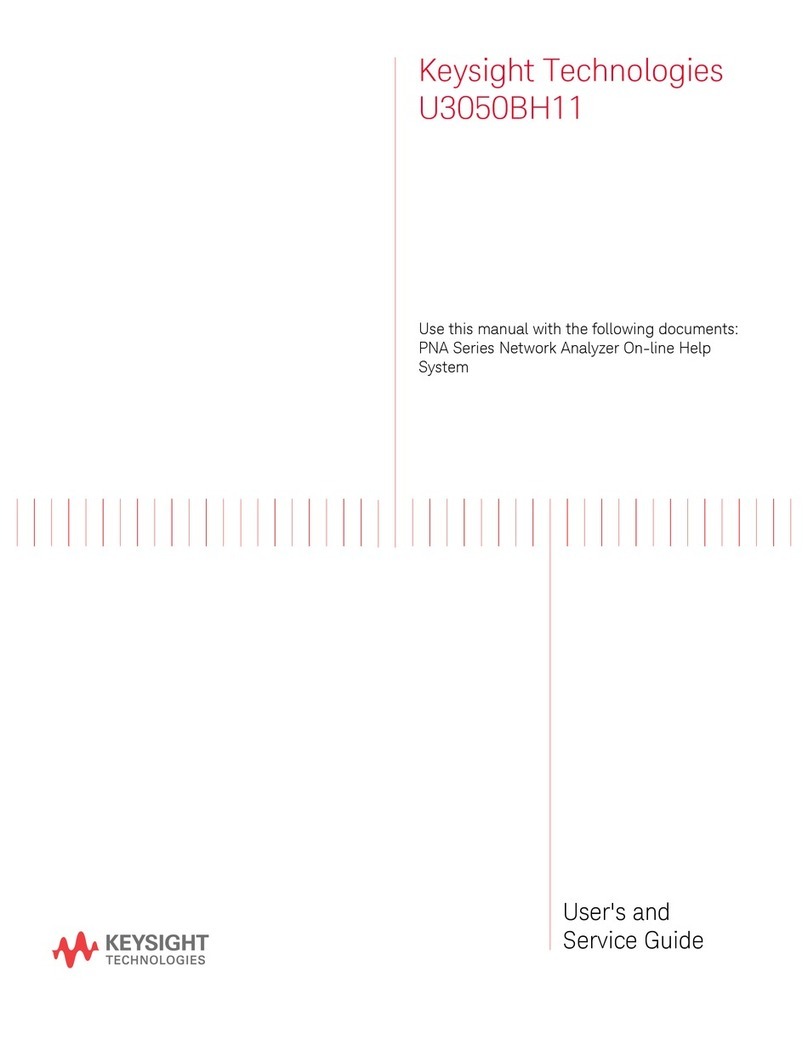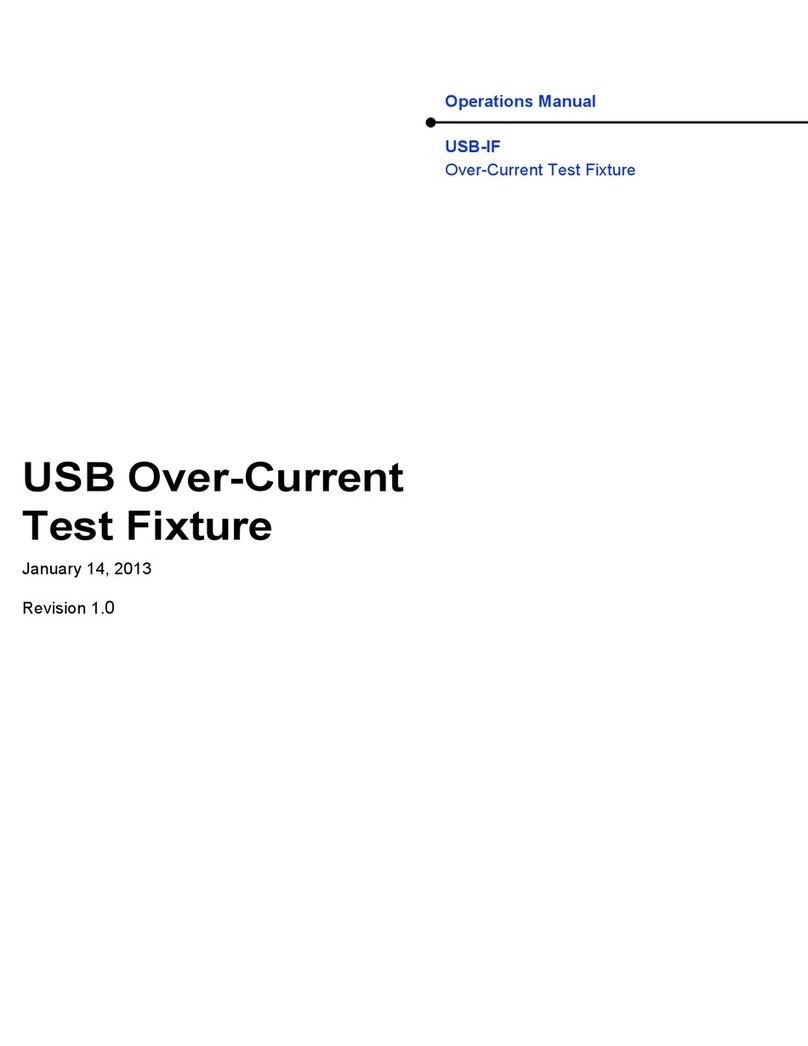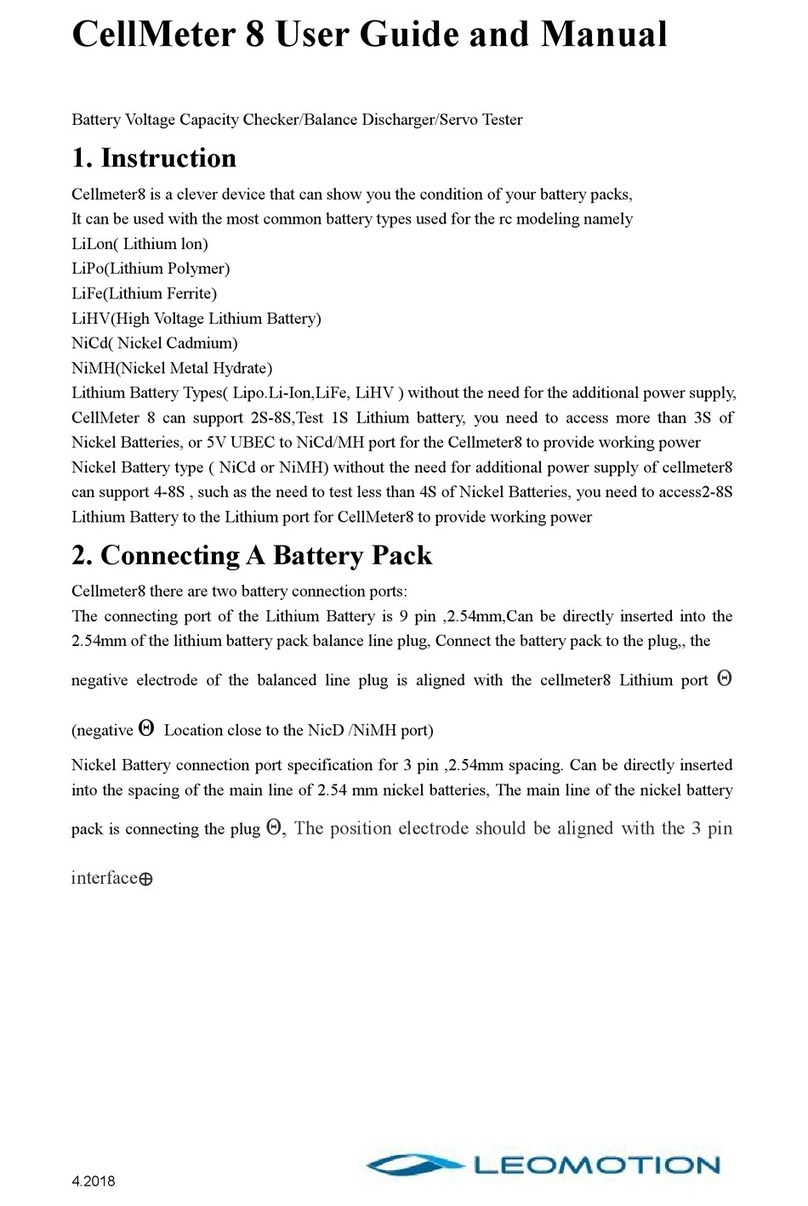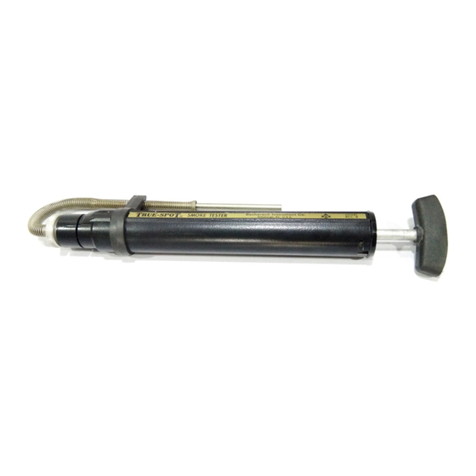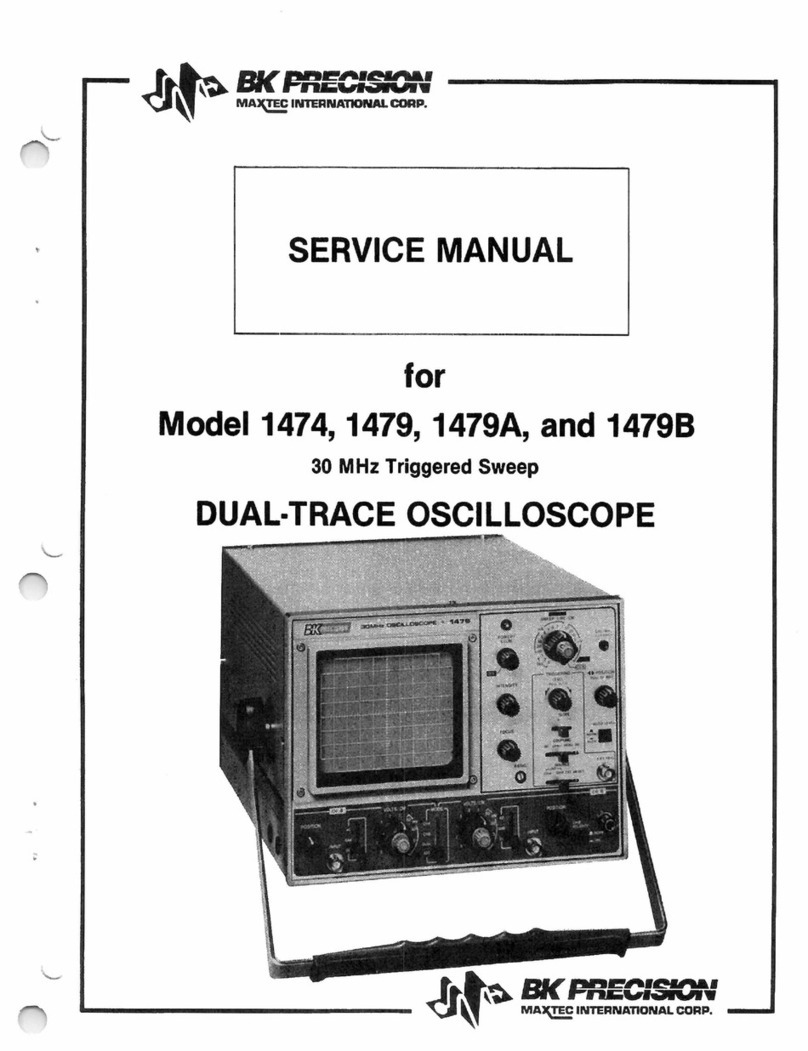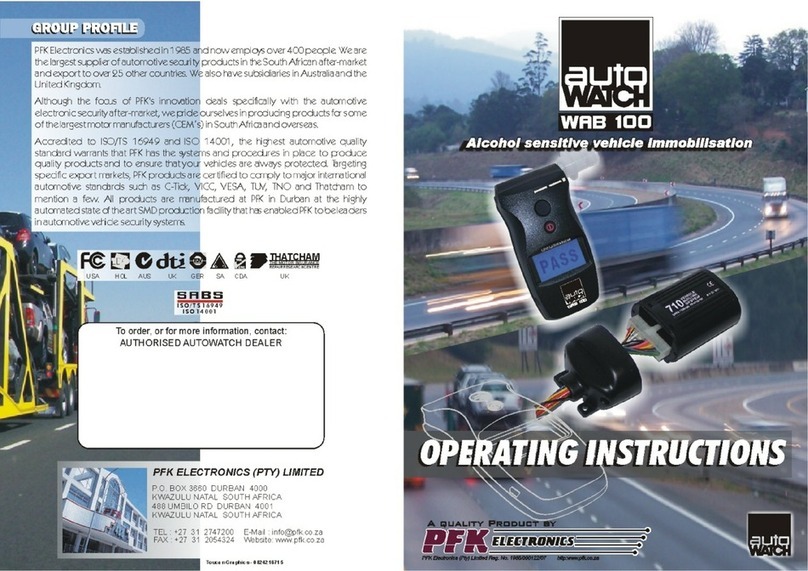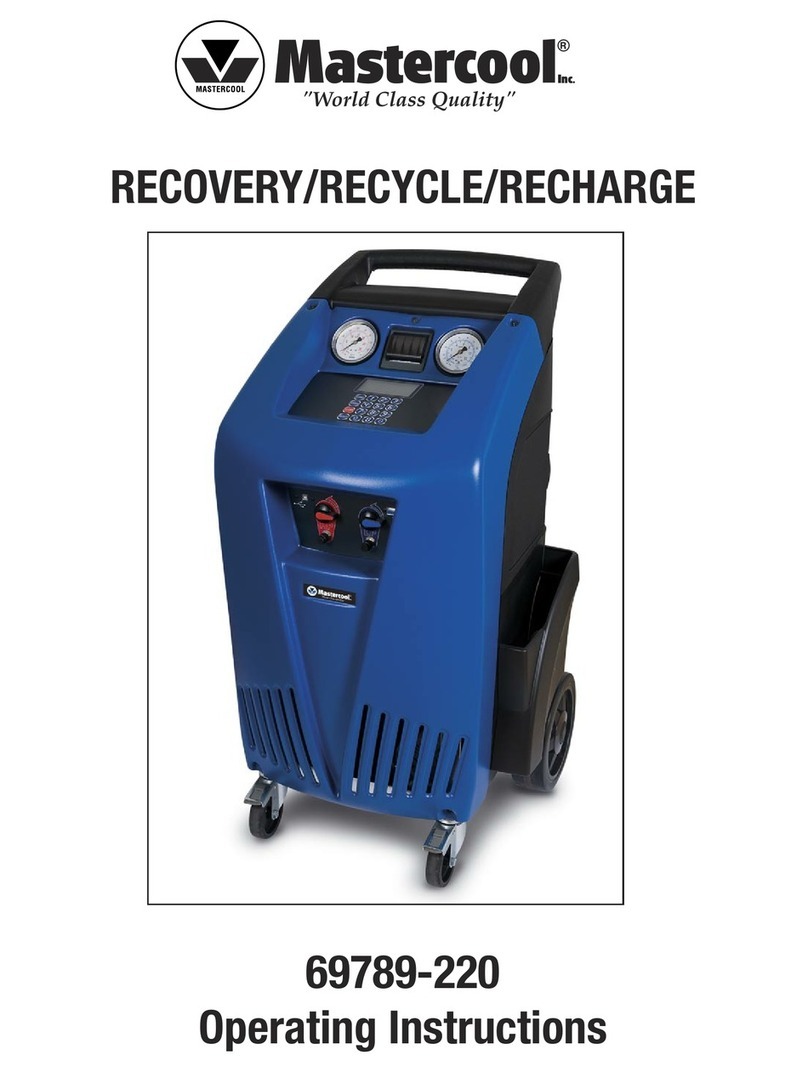S.E.M. CTX MDB Tester PRO User manual

December 2014 P/N: I01160
Version 1.6

2
Introduction......................................................................................... 3
In what countries can I use my CTX MDB Tester? ............................ 3
Description ......................................................................................... 4
Getting started.................................................................................... 5
Getting finished .................................................................................. 5
System ............................................................................................... 6
System parameters ............................................................................ 6
Price programming............................................................................. 6
Payout level........................................................................................ 7
Cashless address............................................................................... 7
Audit ................................................................................................... 8
Print audit ........................................................................................... 9
Testing an MDB device .................................................................... 11
Starting the test ................................................................................ 12
List of error messages coming from an MDB Coin Changer ........... 13
Accept line test................................................................................. 15
Emptying the tubes .......................................................................... 15
List of error messages coming from an MDB Bill Acceptor ............. 16
Status ............................................................................................... 19
Simulator Modes .............................................................................. 20
Tuning Mode .................................................................................... 25
Personal notes ................................................................................. 26

3
Introduction
S.E.M. Inc. is very proud to offer you its latest generation of Vending
Tester: The CTX MDB Tester PRO. This new tester was designed with
one thing in mind: “Mobility”. Its lightweight, solid plastic casing and
entire design fit perfectly the need of the Vending technician on the
road. As Logic changers are gradually being replaced with MDB de-
vices, the need to have more than one communication protocol on the
tester simply vanished. Furthermore, in order to make the new CTX
MDB Tester PRO lighter to carry, it takes its power directly from the
Vending machines MDB port. If you are using it in a bench environ-
ment, an external power source is available in option and connects in
the back. A small carrying case is available in option.
The CTX MDB Tester PRO offers a unique 4 x 20 blue LCD display
capable of sending messages more readable instead of a simple abbre-
viation. On each side of the display is a set of four blue push buttons.
Each button will see its function vary depending on the message visible
on the display.
In what countries can I use my CTX MDB Tester
PRO?
At the time of printing, the CTX can be used in a majority of country.
The power supply itself enables the CTX to be used anywhere in the
world providing you use the proper adapter available locally. IEC For-
mat.
North-American standard
European standard

4
Description
Your CTX MDB Tester PRO comes with a "V" MDB harness. This is
the only thing you need to make your tester functioning as it takes its
power from the MDB connector in the machine. If you are using your
tester in a workshop where machines are not always available, a power
supply is required. This power supply is available directly from SEM
(Part number A06205) if you don’t already have it.
A protective film covers the display and membrane. Remove it. When
looking at the back of the tester, you will see the following things:
Printer / Date serial port Sends a report to a printer or Window's
Hyperterminal. Also used to upload a
new firmware in the tester.
MDB This is where you will connect the "V"
MDB harness. One branch of the V
goes to the machine for capturing
power, the other to the MDB device to
be tested.
External power source You are working in the workshop and
you need power? This is where you
will connect the power supply A06205.
Fuse 2 amps Inside this compartment is the main
fuse. If it needs to be replaced, only
use 2 amps, fast-blo type. Any other
may cause damages to your tester.

5
Getting started
There are two ways of capturing the power to feed your new CTX MDB
Tester PRO. Either you connect it into the MDB port of the vending
machine or, if you do not have a machine available, you can use the
optional power transformer available from SEM. If you are capturing
the power from the MDB port of the machine, shut power down, discon-
nect all MDB devices that may already be connected and connect the
tester. Apply power. If the vending machine sends an error message,
ignore it.
On stand-by, the small green LED is flashing slowly. Press on the ON
button for about one second to start the Tester. You will notice that the
green LED starts to flash rapidly. Release the button when the screen
comes alive.
Upon start-up, the CTX Tester makes a small self check. The following
screen is visible.
The start-up process lasts about three seconds before switching to the
stand-by mode with this screen visible. Actual voltage will vary from
one machine to another.
Getting finished
To shut it down, press again on the same button for one second.

6
System
The System button gives you access to special functions which are:
System parameters
Audit
Print audit
System parameters
Version 1.5 of the CTX Vending Tester has now more submenus than
the previous versions.
Prices programming
This is where you will set the vend price of the three selections for
simulation purposes. The maximum vend price is for the moment set
at $9.95 for each selection. Use the buttons ↑↓ to increase or de-
crease the vend price. Note that the price will wrap around making it
faster to reach a high vend price.

7
Payout level
Payout level refers to how the coin changer handles the change payout.
You can choose between level 2 and 3. Basically, if you are not familiar
with that, it is simply the way the coin changer will handle the change
remittance. In Level 2, the VMC, or in this case the CTX, will dictate
which tube must give out the change. In Level 3, the VMC only informs
the coin changer of the amount to give back leaving the choice of tubes
to the changer's coin management system. Press the top left button to
change the payout level. Once everything set, press on the OK button.
Cashless address
Nowadays, we see more and more credit card readers on vending ma-
chines. Until recently, the CTX only had one cashless address. There-
fore, it was not possible to address number two.
With the recent revision, the CTX is now capable of testing a cashless
device in both ports.
Select which address you want to test. Use the top left button to
change the address and confirm with OK.
When using the CTX in Peripheral simulator into a machine that does
not have a cashless address number two, the display will prompt Cash-
less NO on power up if you have set the address to 2.

8
Audit
The audit gives the coin inventory of the last (or current) coin changer
under test and the sales done in simulation mode. Details of the audit
will vary according configuration of the connected MDB device(s).
The audit is available only if you have done some sales with the CTX.
If no sales took place since the last power up, the display will prompt
No sale made since the last power up.

9
Print audit
If you have the small optional serial printer, you can print the audit here.
You can also make a virtual print using Windows' Hyperterminal func-
tion, XP and older. (Set parameters at 9600, N, 8, 1 plus carriage re-
turn) Requires cable # A03330 from SEM.
Below is a print out of the audit coming from two devices under test.
The first thing visible is the internal configuration of each device. Then
the audit follows.
Please note that the audit detail shows
two MEI products. SEM does not pro-
mote any brands or models over an-
other. Those two products just hap-
pened to be at hand at the moment this
manual was written. It could have been
any other brand.
Details show Canadian units.
Simulator session report:
CTX MDB+ tester v1.0b262
Information sent by the changer:
Changer Level 3
Country currency code:0001
Scaling factor: 5
Decimal place: 2
Coin type credit and routing:
Coin type 00 value: $0.05 to tube
Coin type 01 value: $0.10 to tube
Coin type 02 value: $0.10 to cash box
Coin type 03 value: $0.25 to tube
Coin type 04 value: $0.25 to cash box
Coin type 05 value: $1.00 to tube
Coin type 06 value: $1.00 to cash box
Coin type 07 value: $2.00 to tube
Manufacturer code: MEI
Serial number: 5048G201148
Model tuning revision: CF7500MDB
Software version: 01.19
Optional features supported:
>Alternative payout method.
>Extended diagnostic command.
>Controlled manual fill/payout cmds.
Optional features not supported:
>File transport layer (FTL).
Information sent by the bill validator:
Validator level 1
Country currency code: 1
Scale factor: = 100
Decimal place: 2
Stack. Capacity: 200
Bill validator has escrow capability.
Bill type credit and security level:
Bill type 00 value: $5 Security level: low
Bill type 01 value: $10 Security level: low
Bill type 02 value: $20 Security level: low
Coupon type 03 Security level: low
Manufacturer code: MEI
Serial number: 037680826835
Model tuning revision: AE2600CN
Software version: 17.40
Coins inventory in the tubes:
042 coin(s) in tube $0.05
050 coin(s) in tube $0.10
012 coin(s) in tube $0.25
008 coin(s) in tube $1
028 coin(s) in tube $2
Coin box: $1.25
Bill box: $0.00
Cash sales $1.25

10
This page is blank.

11
Testing an MDB device
The new CTX MDB Tester PRO can test multiple types of MDB de-
vices. At the time of printing, the following types are certified testable.
Cash devices:
Coinco 9302 CGX & GX series
Coinco Global Series
Coinco Quantum Series
Coinco Vortex Series
Coinco all MDB Bill acceptors
Conlux MDB Series
Mars 540 Series
MEI CashFlow Series
MEI all MDB Bill acceptors
NRI/Curranza
Cashless devices:
Aztek
Coges
Comestero EuroKey plus
Debitek chip card reader
ePort edge
inOne from Coinco
Magstripe from Debitek
MEI cashflow
Msmart6 from microtronic
NRI
RDP EASYTRAX from MEI
Sikey (Atto MDB flash) from Elkey
ZIP from ADE
Probably testable but not yet certified...
Jofemar all MDB Series
Pyramid all MDB Series

12
Starting the test...
To start testing your MDB device, simply connect it to the MDB har-
ness of the tester and select Manual. The detection screen will show
up:
Depending the type of MDB device under test, the message varies.
After that, the display will indicate the type of device detected and a
series of functions will be attached to the side buttons.
If no device is connected or if the device is simply not responding, the
following screen will be visible. If so, check the MDB harness leading
to the device and make sure it is securely connected to the device
and/or the tester.
When you're done with your series of tests, simply press on the but-
ton next to the Stop- prompt. The display will acknowledge the end of
session by displaying "Please wait...".

13
List of messages coming from an MDB Coin Changer
The first line of the display is for messages sent by the device. The
error message is sent only when the device is performing an action.
On stand-by, the device is always sending its type (i.e. changer level
2). If an error is detected, it will be visible on the first line of the dis-
play.
It can also be seen elsewhere depending on the nature of the error
reported. For example, a tube sensor error in a level 2 changer
would be seen on the first line, in the payout section, and in the status
as seen below:
The message What it means…
Acceptor unplugged The MDB changer cannot detect its coin ac-
ceptor. Check if correctly plugged. Coin ac-
ceptor may be defective.
Cannot detect The vending tester cannot detect the coin
changer. Check for harness damages.
Check for unplugged harness inside coin
changer.
Changer was reset This message can be seen upon power-up
and when the device is being re-initialize.
Defective changer The tester detects the unit cannot be tested
because of a general failure inside the coin
changer. Send the unit to a service center.

14
Defective sensors A high level sensor is activated while the low is
not. Either a defective top sensor or a foreign
object stuck at the top of the tube. Usually, this
message will be visible after a payout of the
tube having the error.
Device is short There is short circuit inside the unit under test.
Escrow return The coin return lever was activated.
No credit Coin accepted and directed to the tube or the
cashbox. However, that coin was not detected
in either place. Check for jammed path. Also
check for coin sensors in acceptor.
No tube payout No coin value linked to this push button. Even
if the tube is present, it may have an identical
value as another. In MDB mode, two 25¢ tubes
will be seen as one tube. As an example, a
coin changer having 3 x 25¢ and 2 x 1$ tubes
will be seen as a two-tube changer (25¢ & 1$).
Pay out busy Changer is telling the VMC it is currently dis-
pensing change.
Please wait The CTX is waiting.
ROM Checksum The checksum of the coin changer does not
error match with its internal memory because of
corrupted data. Unit must be sent to a service
centre.
Routing error A validated coin did not follow the intended
route. It went to the cashbox but was meant to
go the tubes or vice-versa. Check the gate in
the acceptor.
Tube jam The coin changer has detected a coin jam into
one of its tubes.
Slug Unknown coin inserted. If the coin is genuine, it
means the coin acceptor has totally lost its rec-
ognition capability (memory erased) and must
be sent to a service center for re-programming.
In a Level 2 coin changer, the state of the tubes will be indicated as fol-
low:
HI= Both sensors, low and high, are covered with coins.
LO= Low sensor is covered with coins.
NO= No sensors are covered with coins, most likely, the
tube is empty.
DEF= Defective sensor in tube.

15
Accept line test
One test you MUST also perform is to disable the Accept Line on the
tester and insert big and small coins. All coins MUST be rejected
when the accept line if OFF. If it does not come out of the changer, it
means the return path of the changer is jammed. Test the coin return
lever as well.
Emptying the tube
Once the test completed, it is now time to empty the tubes you just
filled.
Press on Payout and then on the corresponding button (5¢, 10¢, 25¢,
100¢)to dispense from each tube. To dispense one coin from the
tube, press briefly on the corresponding button. To empty this tube,
press and hold the button and the process will start. To stop it, press
on STOP. If you want to empty all the tubes in a single operation,
press and hold the ALL button until the payout starts. Note that only
the coins that went to the tube during you test you will be paid out.
To empty the rest, you may need to use the buttons on the changer
itself.
Press STOP before unplugging the coin changer.
Once everything tested and cleaned, you can slip your coin changer
into a bag, write a short memo and put that changer on a shelf for
future use.

16
List of messages coming from an MDB Bill Acceptor
Connect your bill acceptor in the proper connector. Note that your bill
acceptor has a "V" harness just like the MDB tester. Connect the
male part of the "V" coming from the bill acceptor to the female side of
the "V" from the tester. Doing the contrary will result in the incapacity
for the tester to detect the presence of the bill acceptor.
Upon power up, the following display will be visible.
This setting means you can insert any bill into the acceptor and it
should be accepted and stacked immediately. If you want to keep the
bill into the escrow position, change the escrow setting from OFF to
ON as seen below.
If you insert a bill, the display will inform you that a $xx bill has been
accepted and is currently waiting for you to either send the stack or
reject order.
The messages What it means…
Attempted qty Number of attempts to insert a bill while the
acceptor is disabled.
Bill box removed Bill acceptor has its stacker box removed.
Bill not identified Bill is unknown to the acceptor.
Bill rejected Bill was rejected by the bill acceptor.
Bill removed Bill was removed manually while being ac-
cepted by the bill acceptor.

17
Bill returned The bill has been returned because you
pressed on the reject button.
Defective motor The motor pulling the bill is defective.
Invalid escrow req. Stack or reject command cannot be performed
as the bill is already in bill box.
Not available This option is not available with this type of bill
acceptor.
ROM checksum error The checksum of the bill acceptor does not the
calculated checksum.
Sensor problem One of the sensors has failed to provide its
response.
Stacker count Amount of bill into the bill box
Stacker is full Stacker full, cannot accept further bills.
Unit disabled Bill acceptor does not have the permission to
accept bills.
Unit must be enabled Escrow button activated while accept line is
OFF.
Acceptor busy Bill acceptor is performing a task and cannot
answer a request.
Acceptor jammed Bill stuck in the bill path.
Acceptor was reset Bill acceptor has been reset.
Disabled/rejected The bill acceptor does not have the permission
to accept this type of bill.
$xx in escrow The bill displayed is currently in escrow posi
tion waiting to be stacked or rejected.
Stacked Value of the bill being stacked plus total
amount inserted so far.
Turn the ACCEPT LINE off. The bill acceptor should not accept bill.
Test many denominations. Test many bills of each denomination as
well.
When finished, press on STOP before unplugging the unit.
Once everything tested and cleaned, you can slip your bill acceptor into
a bag, write a short memo and put that changer on a shelf for future
use.

18
This page is blank.

19
Status
The tester has a very interesting function called Status. This button
gives you the internal configuration of the MDB device currently con-
nected. Of course, the configuration will be different from one device
to the other. It is however, a very useful tool.
Some of those configurations are visible below:
Coin changers Bill acceptors

20
Simulator Modes
The CTX MDB Tester PRO offers you two simulation modes: VMC
Simulator and MDB Peripheral Simulator. The VMC Simulator will
transform your tester into a vending machine offering you three pro-
grammable selections. You can change the price of those selection as
you have seen it on page 6 of this manual. When used as a VMC, the
tester allows you to connect up to three MDB devices which are: The
coin changer, the bill acceptor, and some card reader.
The other simulator is the Peripheral Simulator. This is a very unique
feature allowing you to transform your tester into either a coin changer/
bill acceptor, and a cashless device. With the simulator, you can trans-
fer money to the machine, make a sales, and watch as change is given
back (virtually) by the machine.
Testing MDB devices in simulation mode.
The simulator function enables you to test multiple MDB components
together in real life situation and see how they interact together. For
example, you can test a coin changer and a bill acceptor together and
see if the change given out is accurate.
To start, press on Simulator. The display will then offer you two types
of simulator: VMC simulator of Peripheral simulator. Select VMC
simulator. When operating in VMC simulation, the CTX tester will
power up any MDB device that is connected to its port. The display will
then prompt you any device it communicates with prompting to insert
coins and/or bills and/or card.
Table of contents
Popular Test Equipment manuals by other brands
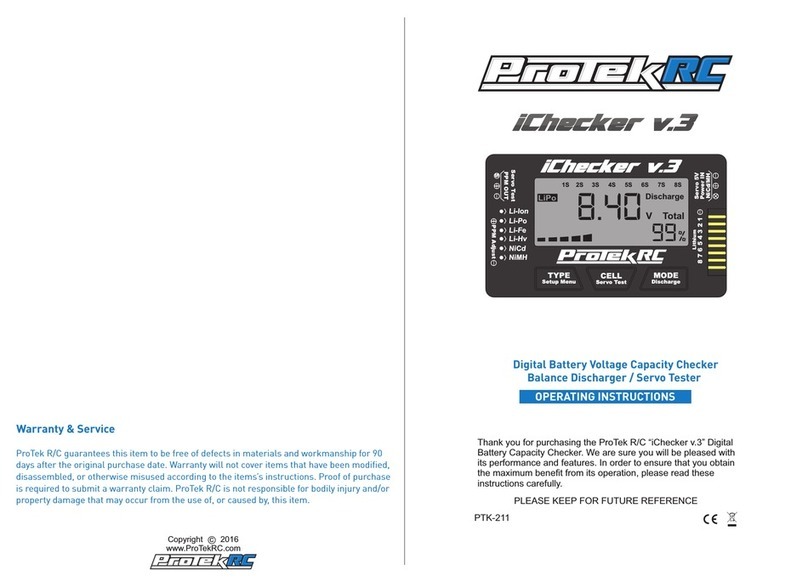
Protek RC
Protek RC iChecker v3 operating instructions

Isotech
Isotech IIT 1500 instruction manual
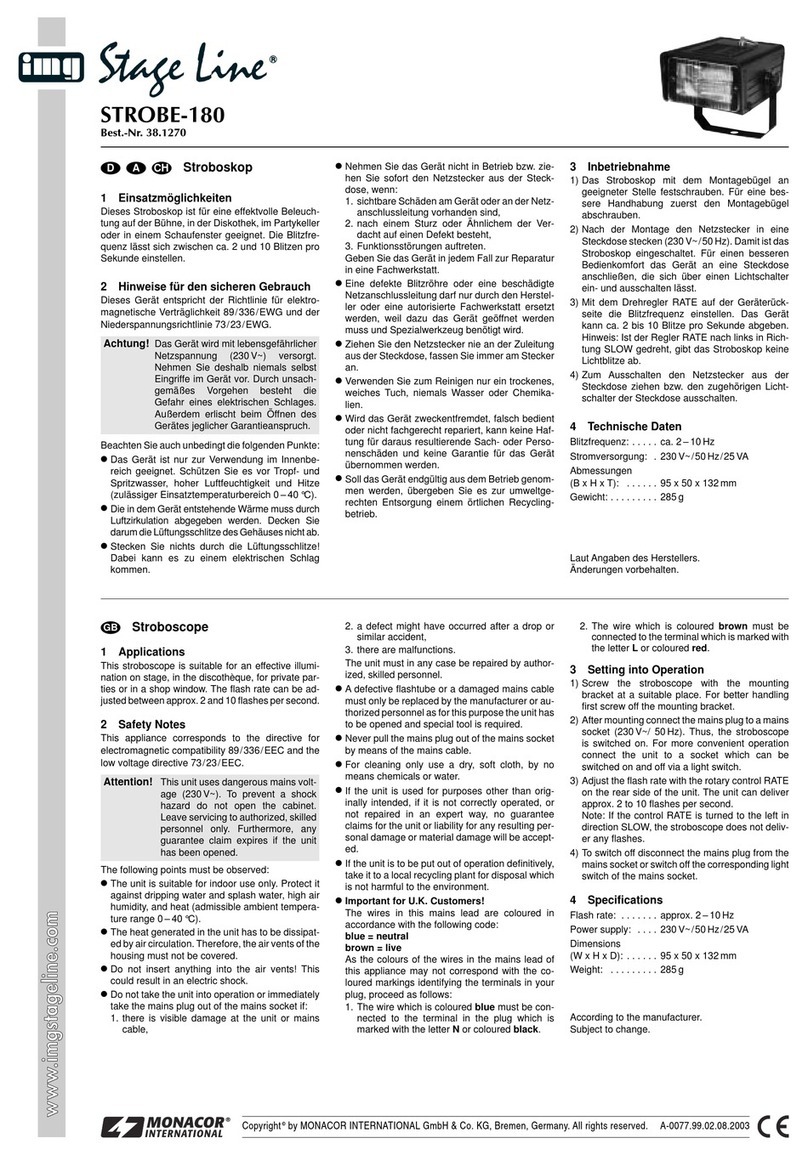
IMG STAGE LINE
IMG STAGE LINE STROBE-180 quick guide
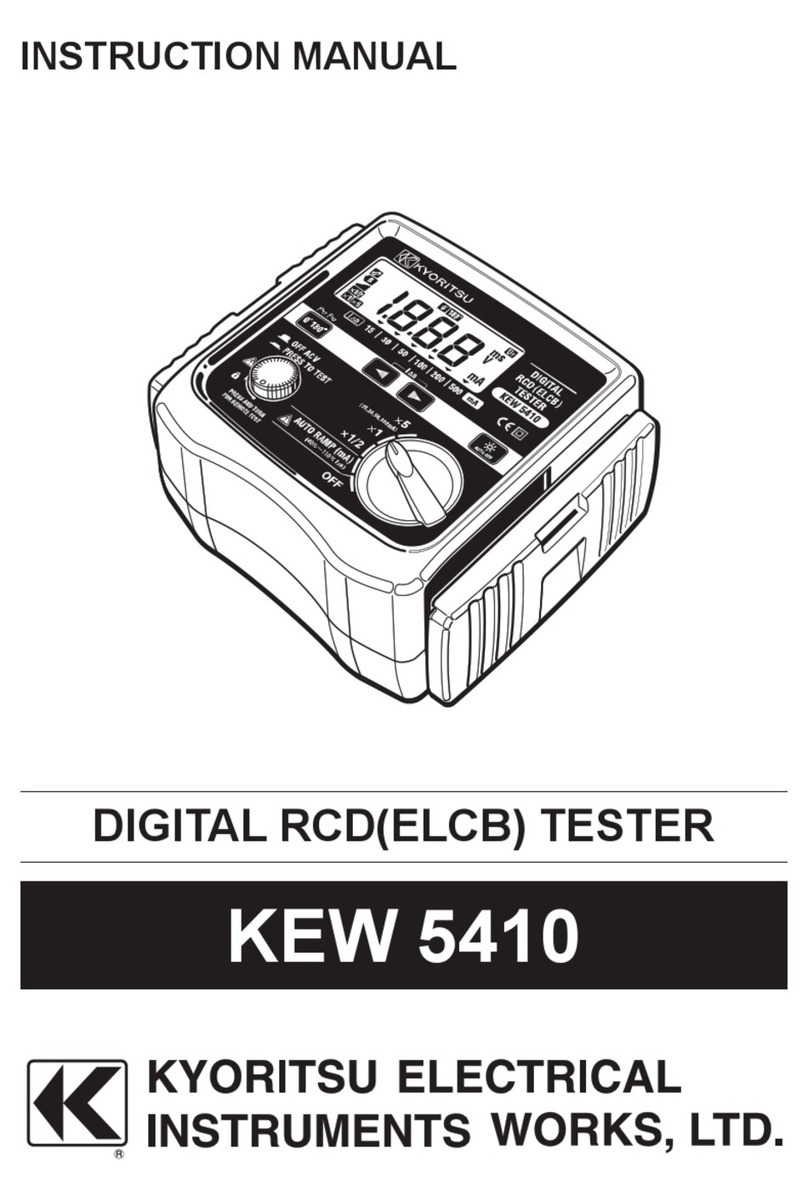
Kyoritsu Electrical Instruments Works, Ltd.
Kyoritsu Electrical Instruments Works, Ltd. KEW 5410 instruction manual
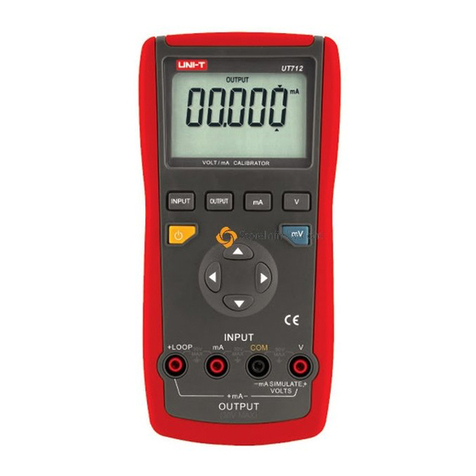
Unit
Unit UT712 operating manual
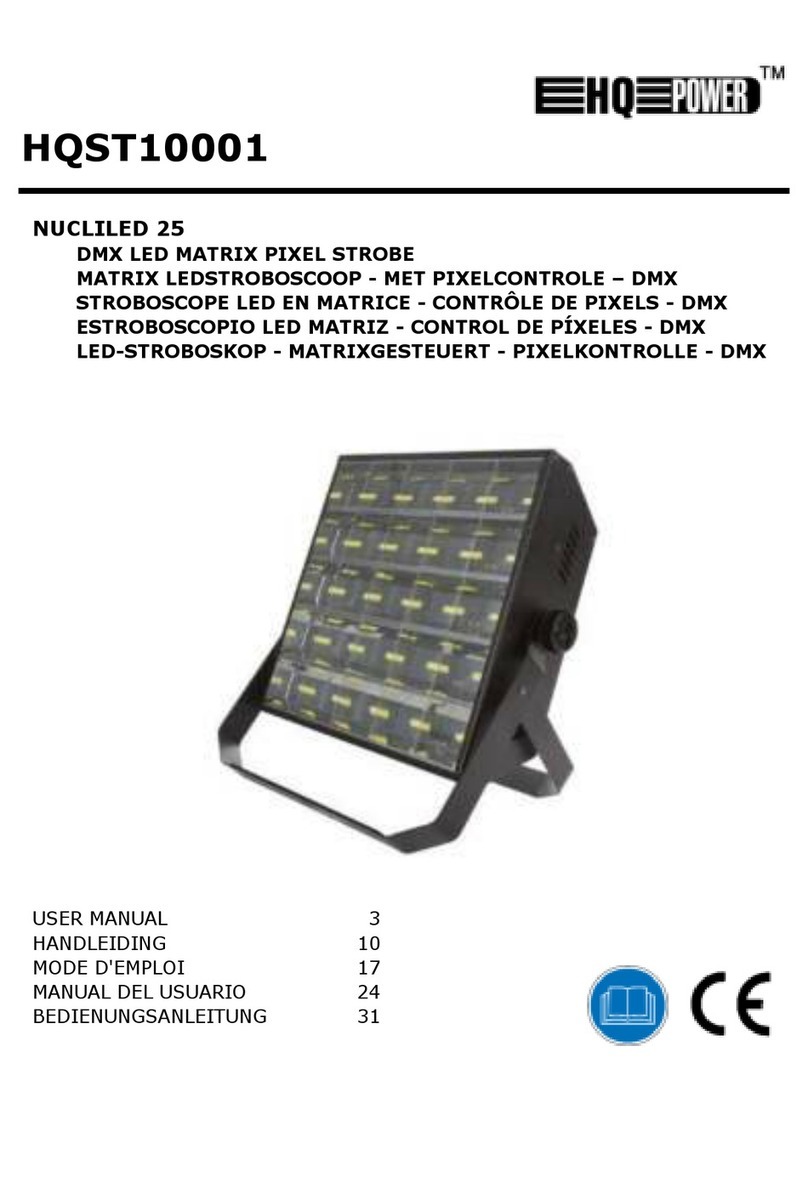
HQ Power
HQ Power HQST10001 user manual


